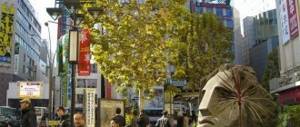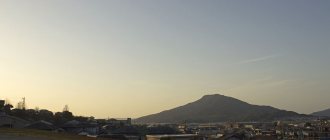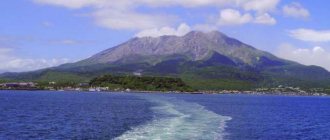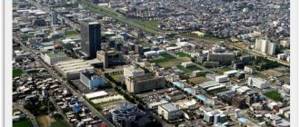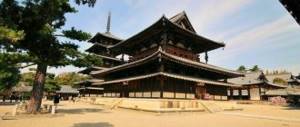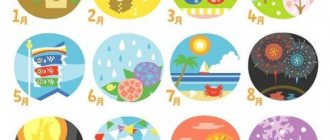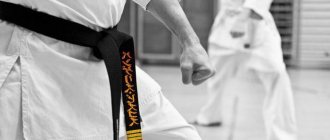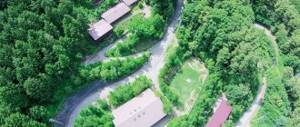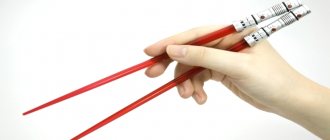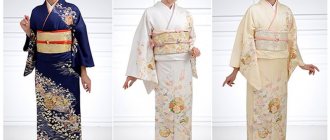The capital of Japan, Tokyo, is a metropolis that combines modern buildings with traditional temples. Guests of the Land of the Rising Sun are eager to see the richly decorated Meiji Temple with its high gates, the Emperor's Palace, and the Tokyo National Museum with unique works of art. Tourists visiting and traveling around Japan's capital need to understand the areas of Tokyo.
Let's take a look at the most interesting quarters of the city. At the same time, we will try to give advice to guests of the city in which area of Tokyo it is most comfortable to stay and in which neighborhoods the attractions of the capital of Japan are located.
Prestigious area
The most fashionable area in Tokyo is Ginza, which means “coin”. In 1612-1800 The Mint of the Land of the Rising Sun was located in the area, producing silver coins. The quarter is home to the best restaurants, fashion boutiques and first-class hotels, clubs and galleries. The streets of the Ginza quarter are much wider than in other areas, which is extremely atypical for traditional Japan, which values every centimeter of its area. The cost of a square meter of land in the Ginza quarter costs 100 thousand dollars, so the quarter is the most expensive area in Japan.
Attractions of the capital located in the Ginza district:
- The business center of the capital is Marunouchi.
- Ginza Wako Tower with shops selling unique luxury items.
- Emperor's Palace. Perhaps the main gathering place for tourists in this area. You can enter the palace only two days a year: December 23 and January 2. On all other days the palace is closed to tourists. It is worth noting that during such a period, a guest of the capital will be able to see a view of the Nijubashi Bridge, the Japanese Garden, and the ruins of ancient buildings.
- Kabuki Theater. Three- and five-hour performances in three or four acts are shown on the theater stage. You can watch them in full or purchase a ticket for one of the parts. At the performance you will be given headphones with simultaneous English translation.
Entertainment, attractions and active recreation
In Tokyo you can find a lot of entertainment and have a great time. We will describe only the most popular ones.
In this city, you can rent a bicycle absolutely free and ride it at the Palace Cycling Course. This type of rest is available from 10 am. Just keep in mind that the number of vehicles is limited.
A central part of Japanese culture are the festivals that take place throughout the year, without which a trip to Tokyo would be considered incomplete. Festivals are dedicated to a variety of topics: flowers, stars, harvests, children, the moon, longevity and even the dead. During the procession, you can not only watch the festive procession, but also taste all sorts of dishes and watch the performances of street performers.
One of the favorite places for tourists in Tokyo is Harajuku Station. Teenagers from all over the metropolis flock there, dressed in the most bizarre outfits. And in the nearby Yoyogi Park, city visitors can find many interesting characters, see martial arts training, and watch amateur performances.
Harajuku Station
If you are sure that you have already figured out what kind of place Tokyo is, you are mistaken. A trip to the Five Lakes will convince you of this. This is an amazing place for lovers of active pastime: hiking in the mountains, boating, cycling, fishing. The most developed excursion place is Lake Kawaguchico. It is precisely the main transport hub of the Five Lakes.
Tourists are recommended to visit the Fuji-Q Highland amusement park, which houses the scariest roller coaster in the world.
Colorful area
Among Tokyo's districts, Asakusa is distinguished by the fact that it has retained the flavor of an old Japanese city. The area of the block is small, you can get around it on foot. Or take a rickshaw ride and explore the area on an inexpensive excursion for eight thousand yen for two. The quarter is famous among tourists visiting Japan due to the Buddhist temple of the same name located here. Its other name is Sensoji. This temple in the capital of Japan was founded back in 628.
Another Buddhist temple located near Sensoji is Dempoin Temple. It is notable for its garden. Unlike Sensoji Temple, this site is closed to tourist visits.
The Asakusa area hosts a large number of festivals. The most crowded:
- the ancient festival of Sanya Matsuri;
- samba dance festival.
Most of the historical and national monuments are located in Japan's first public park, Ueno, founded in 1873. It houses many museums:
- Museum of Western Art.
- Science Museum.
- National Museum of the City of Tokyo.
- Royal Ueno Museum.
- Tokyo City Art Gallery.
- Toshogu Temple.
Tokyo Metro
An ordinary tourist can easily get lost in this whole tangle of metro lines and high-speed trains. But if you understand some principles (the color of the line, transfer nodes), it is somewhat easier to navigate the metro.
- On each line, all station names are duplicated in English. language.
- Each metro line has its own letter indicator.
- Metro lines A, I, S, E belong to the city metro (TOEI). The remaining lines G, H, C, N, T and others belong to the Tokyo Metro Line. Transfers between the TOEI and MetroLine lines require double control (when transferring from one line of a station to a station on another line).
- When you purchase a subway pass, it will only be valid on TOEI or MetroLine subway lines. There is no general pass for all metro lines. Therefore, upon arrival at the airport, immediately buy a tourist pass (Japan Rail Pass), which covers all types of public transport (including all metro lines).
- Each station has its own number (letter and number). The letter means the branch, the number is the station number in order. And at the transfer nodes, all diagrams indicate the designations of stations to which you can transfer.
- Each exit from the station has its own number (there are many exits). Hotel addresses often indicate the metro station and exit number you need.
Cultural district
This area of Tokyo is bustling with life every evening and every night. This explains why Roppongi is so popular among international visitors and native Japanese residents. A huge number of pubs, bars, cafes and restaurants, night discos and clubs are designed for the relaxation of foreign guests. Visitors not only relax here, but also live. It is worth noting that the best areas for foreign guests to live are: Roppongi, Hiroo, Azabu, Akasaka. It is in these neighborhoods, oddly enough, that the embassies of many countries are located.
Most tourists enjoy spending time in the Roppongi area. This Tokyo quarter is the cultural center of the Japanese capital, as it is home to a number of museums. The name Roppongi means "Six Trees" in the native Japanese language.
Capital attractions located in Roppongi:
- "Roppongi Hills" It is a city within a metropolis. It contains residential and commercial premises, entertainment areas, shops, restaurants, cinemas and an upscale hotel. The complex has about two hundred fashion boutiques. Roppongi Hills is a true symbol of the modern technology industry.
- Skyscraper of fifty-four floors Mori Tower. It is named after its creator. The center is divided into zones for the sale of all kinds of goods for life and recreation. There are commercial levels, apartments, hotels and museums in the blocks.
- Residential complex "Tokyo Midtown" with a tower of 248 meters. At the moment, the building is recognized as the tallest building in the Japanese metropolis. Almost all floors are given over to commercial facilities, with a hotel on the upper floors.
- Tokyo National Art Center, Suntory Art Museum and Mori Museum.
- National Art Center. It is considered the largest museum in the Land of the Rising Sun.
Common features of Tokyo hotels
Talking about the specifics of Tokyo districts and their hotel opportunities, I somehow mentioned all the main accommodation options.
Summarizing what has been said about Tokyo hotels, we can highlight some distinctive characteristics inherent in all of them to varying degrees.
Firstly, there are a lot of hotels in Tokyo; if you wish, you can find accommodation options to suit every taste. But not for every wallet.
Tokyo is an expensive city; here, especially in the central regions, there is virtually no budget hotel segment, to which Russian tourists are accustomed in Europe. The analogue of the European two stars in Tokyo will be hostels, which are on a slightly different level in terms of service and surroundings.
On the other hand, Tokyo hotels of any price segment are characterized by cleanliness and well-functioning, friendly service. Over many years of traveling around Japan, I have never encountered rudeness from hotel staff. I'm not even talking about theft. You can safely leave any things in the rooms without worrying about their safety. In European-style hotels they speak English, there are no difficulties in communicating. In traditional Japanese hotels and regular (non-international) hostels, you most likely won't find English speakers. But even there, unsolvable situations rarely arise.
Finally, perhaps the most important criterion when choosing a hotel in this huge metropolis should be transport accessibility. In a number of cases, it is worth going for a more expensive, but more conveniently located accommodation option - this will ultimately lead to both cost savings and the fact that your stay in Tokyo will be more interesting and relaxing.
Concluding this short story, I would like to wish the readers good luck in choosing a hotel. I am sure that your choice will be the best!
Artificial area
The seaside district of Tokyo City Odaiba is another unique quarter of the capital of Japan. It partially expanded its territory on the artificial islands of the bay. When a tourist travels along the monorail, over the rainbow bridge, he can admire the Fuji TV building, which is 26 floors high. The building is decorated with a metal sphere; inside it there is an observation deck from which you can admire the expanses of the Japanese capital. In the Odaiba quarter there are world-famous museums:
- Museum of Marine Sciences;
- National Museum of Modern Science and Innovation.
Ritz-Carlton Hotel
In the Roppongi quarter, which is located in the entertainment part of the city, there is the Ritz-Carlton hotel. It occupies the top 9 floors of a 53-story building that also houses offices. The hotel is located on a hilly site, and therefore, from the windows of the room there is a stunning view of the city. In the building itself and the adjacent Tokyo Midtown complex, you will find good shops and markets.
Lungs, heart and more: what people who have recovered from Covid should check
A soft headboard is easy to make yourself. Take note of the economical way
Tamara Globa reported which zodiac signs will be especially lucky in March
Electronics District
The name of the Tokyo district Akihabara is translated from the native Japanese language as “valley of autumn leaves”. Akihabara is a place of modern trade in advanced technical products. Tourists visiting this area will be surrounded by billboards, street barkers, and loud music. Akihabara is a noisy place. There are hundreds of stores filled from top to bottom with different types of innovative technology. Compared to regular stores located in other areas of the metropolis, prices in Akihabara are approximately 30% lower. The reason for such attractive prices lies in the fact that the equipment comes to the shelves here directly from manufacturing plants without markups.
In the area you can visit an exhibition of industry achievements. After all, equipment from this area of Tokyo City will arrive in Moscow stores in a few months, or even years, at best.
Where to stay for families with children
Tokyo is very friendly to young children and has many great places for families. I would especially like to highlight the Tokyo Bay Hotel, which is located in the Tokyo Disneyland area. This is a suitable place for family walks and jogging. The Odaiba area also has the only beach in the capital, where you can relax from the constant hustle and bustle of the metropolis.
A beautiful soft ottoman is easy to make with your own hands: simple instructions
Popcorn contains a lot of trans fats: what foods should you give up after 30 years?
Black monochrome and oversized jacket: stylish looks from Instagram stars for March 2021
Special position
Tokyo has 23 special districts that form the core and most populated area of the Japanese capital. In the entire Land of the Rising Sun, such a distinction exists only in Tokyo.
These areas differ greatly in area. It can range from 10 to 60 km2. The number of residents also varies in the quarters - from 40 to 830 thousand people. Some areas of Tokyo are expanding with artificial islands. We will talk about this below.
The population of special areas is just over eight million people. This is about 2/3 of the population of the capital of Japan and about 25% of the residents of Greater Tokyo. The quarters have a population density of almost 14 thousand inhabitants per square kilometer.
Special areas of Tokyo:
- Arakawa.
- Adachi.
- Bunke.
- Itabashi.
- Katsushika.
- Kita.
- Koto.
- Minato.
- Meguro.
- Nakano.
- Nerima.
- Ota.
- Shibuya.
- Shinagawa.
- Shinjuku.
- Suginami.
- Sumida.
- Setagaya.
- Taito.
- Tieda.
- Toshima.
- Chuo.
- Edogawa.
Let us describe some of them in more detail.
Where to stay, what to eat, what to ride
Living in Japan is not cheap. Experienced tourists advise looking for accommodation with the help of RoomGuru, where you can find the most profitable option. We will try to briefly describe where you can stay and eat in Tokyo.
Restaurants and cafes
Japan is famous for its cuisine, which, however, is not to everyone’s taste. One of the most interesting cafes is Cafe du Lievre, decorated in the style of a hare's hole. The design is dominated by green color, and the menu contains many delicacies, salads and coffee for every taste. They recommend trying desserts made from buckwheat flour.
Cafe "Cafe du Lievre"
After walking around the city, you can visit the Gundam themed cafe, dedicated to the series about the Gundam robot. The staff here are dressed in cartoon uniforms, and the vegetables are cut into the shape of Earth Federation emblems. Be sure to look into the restroom - there will be a camera watching you.
On every corner of the metropolis there are konbini shops where you can taste local dishes: rice balls, sandwich rolls, drinks, salads, sandwiches. There are such shops in supermarkets, but they are harder to find. Bento shops, curry shops, and noodle shops are also popular.
There are a lot of fast foods in the metropolis. There are also European ones (McDonald's, KFC), and only Japanese ones:
- "MOS Burger";
- "Freshness Burger";
- "Lotteria"
- First Kitchen.
It is better to taste true oriental cuisine at Matsuya Restaurant Chain, Yoshinoya or Ootoya.
"Yoshinoya"
Tokyo also has plenty of restaurants for gourmets. For example, Tsukiji Restaurant strives to become a first-class sushi restaurant, while Ginza, Akasaka and Roppongi Hills are ready to delight you with oriental cuisine at fairly decent prices.
In Japan, you don't leave tips - they are already included in the price of the service.
Car rental and public transport
The Tokyo metro is famous all over the world. Some say the map can instill fear in particularly impressionable tourists: there are 300 stations and 13 main lines, JR lines and even private branches. Every day the metro carries about 9 million passengers.
Experienced tourists advise taking the JR Yamate ring line as a basis, which covers the main part of the city. A full revolution will take no more than an hour, and getting to any place will not be so difficult.
In addition, current maps and navigation systems sequentially lay out the road, suggest numbers, colors of cars and arrival times. Moreover, almost 50% of metro stations have free Wi-Fi. This transport can be used from 6-00 to 24-00.
Subway in Tokyo
The carriages are actively air-conditioned inside, so it is better to take a light blouse or windbreaker with you.
The suburbs of Tokyo can be reached by Shinkansen bullet trains.
If you decide to use taxi services, it is worth considering that they have their pros and cons. The main advantage is that you can get to any place in the city. Disadvantages: a considerable distance and constant traffic jams, resulting in low travel speed and high cost of travel. In addition, the cost of travel at night increases by 30%. But Japanese taxi drivers are decent and do not try to deceive an inexperienced tourist - this is not accepted in Japan.
Buses are an unpopular form of transport, which mainly connects various metro points or simply runs around the block. It is not possible to get from one end of the city to the other using this type of transport.
Bus in Tokyo
Trams in Tokyo began operating at the beginning of the last century and have firmly established themselves in the city, entangling it with their network. But about half a century ago, the Japanese practically got rid of them, leaving only subways and buses. Today in Tokyo there is only one line - Arakawa, which has turned into a real attraction. The tram runs along the line at a speed of 12.5 km per hour.
Tokyo has a well-developed line of bike paths, which are not recommended for inexperienced cyclists. In addition, the city is not located on level ground, but on hills, so this walk will not be to everyone’s liking.
Cycle path in Tokyo
Japan adheres to the Geneva Convention on Road Traffic. Therefore, the IDP “crusts” will not pass here. In fact, rights can be legalized by translating them into Japanese and passing an exam on knowledge of traffic rules. However, you need to remember where Tokyo is located, in what a densely populated and advanced country. Therefore, parking spaces are in short supply, and parking time is not cheap. In addition, intricate traffic junctions, left-hand traffic, expensive fuel, signs in Japanese and high fines are not in favor of car rental.
Japan is famous for its law-abiding citizens; the crime rate here is minimal. And tourists should remember this so as not to become a source of crime.
Best hotels in Tokyo
Finding housing in Tokyo is a separate issue. The choice is determined not only by finances, but also by individual tastes and desires to learn something new.
Wealthy tourists are greeted by fashionable hotels, the prices for rooms vary from 57 thousand JPY to 180 thousand JPY. The most luxurious hotels are located in the Shinjuku area, Akasaka and near Tokyo Station. There will be a gorgeous panorama and exquisite service. But you won't find anything exotic here.
You need to look for a curiosity in real ryokans (traditional hotels), with wickerwork on the floor and mattresses instead of beds. And paper doors will immerse you in the atmosphere of real Japan, without robots and neon. A night in a good ryokan hotel can cost 10-16 thousand JPY.
The intricate hotels with capsule rooms deserve special attention. Many of these hotels welcome only men, but there are also women's and mixed hotels. A night in such a room will cost 2.0-2.7 thousand JPY. As a bonus, such hotels offer guests free saunas.
Room at Hotel Gracery Shinjuku
If you have the slightest tendency towards claustrophobia, staying in such hotels is not recommended.
For those who do not have time to search for housing on their own, we offer a list of the best Tokyo hotels:
- Hotel Gracery Shinjuku, 4 stars;
- Asakusa View Hotel, 4 stars;
- Hotel Villa Fontaine Tokyo-Tamachi, 4 stars;
- “Hotel Villa Fontaine Tokyo-Shiodome, 4 stars;
- Richmond Hotel Tokyo Suidobashi, 3 stars;
- Hotel Grand Arc Hanzomon, 3 stars.
Multi-ethnic area
The most multinational district of Tokyo is considered to be the Shinjuku quarter, which is the main transport hub of the Japanese capital. Currently, the capacity of the three-tier platform at the western entrance of Shinjuku alone is equal to a billion passengers. All the active life of this cosmopolitan area basically takes place around the quarter station. This accumulation of passengers determined the structure of the quarter. People need food, shopping - gradually, the narrow streets heading in all directions from the station began to be filled with cafes and eateries that are popular in the Land of the Rising Sun.
Shinjuku is divided into two parts by train tracks:
- Eastern. Active modern life is in full swing in the eastern part of Shinjuku, where the longest red light district in the country is located.
- Western. In the business part of the quarter, in the west, the headquarters of the Tokyo city administration is based - Tote.
Between the eastern and western parts there is a beautiful park - Shinjuku Goen. In the spring, it attracts tourists to the country with a spectacle of incredible beauty - the blossoming of Japanese cherry trees.
Capital attractions located in Shinjuku:
- Sompo Japan Building. The skyscraper is 193 meters high.
- Shinjuku Historical Museum.
- National Theatre.
- Taisoji Buddhist Temple.
There are many foreigners living in the Shinjuku area of Tokyo. This is the shopping and entertainment center of the capital. Towards evening, the area begins to experience noisy nightlife. Shinjuku has a large number of restaurants, cinemas, and gaming halls.
The cult of food is so strongly developed in Tokyo that it has spread even beyond Japan and served as an impetus for the development of the restaurant business, in particular in our country. In the Northern capital, Tokyo City restaurants are open in almost all districts of the city. In the Primorsky district, a restaurant is open on Komendantsky Avenue. The restaurant menu offers Japanese cuisine, as well as Italian and Chinese. You can order food delivered to your home from Tokyo City to the following areas: Moscow, Primorsky and any other.
Nightlife in Japan's capital
A holiday in Tokyo is incomplete without checking out its nightlife. And this metropolis has something to present to its guests.
You can have fun and relax in the Ruby Room nightclub. Most of the guests of this place are foreigners, so tourists feel completely comfortable here. In addition, relaxation here does not break your pocket, and a few minutes walk from it there is another entertainment club - “Oath”, where you can dance absolutely free to the music of local DJs until 5 am on regular days and on weekends - until 8.
The best night centers in Tokyo are Womb Tokyo and AgeHa.
The metropolis is also famous for its red light district, Kabukicho. True, thanks to the work of the police, there are fewer and fewer depraved pleasures in Tokyo.
Kabuki-cho Street
Youth District
Shibuya is an area of Tokyo where young residents of the Japanese capital prefer to spend their free time. This area has a vibrant nightlife scene with loud music coming from every pub and bar. Shibuya is also a great place for shopping. Tourists will be offered entertainment in this quarter. Hotels located in the Shibuya area offer rooms for the whole night for a maximum of one hundred dollars.
One of the most famous points in Shibuya is Hachiko Station. The name was given to it on behalf of the bronze statue installed here. The monument to the dog Hachiko personifies devotion to his owner. Everything around the station is lit up with billboards; commercials are broadcast on a huge screen.
Capital attractions located in Shibuya:
- Museum of Tobacco and Salt and Museum of Electric Power. A significant disadvantage for tourists is that excursions in these museums are in the native language of the Japanese.
- Yoyogi National Stadium with outdoor ice skating rink.
- Park studio of the NHK television company.
Royal Park Hotel The Shiodom
If you want to stay in a more prestigious location, but at a lower price, then the five-star Royal Park Hotel The Shiodom is at your service. Inside the hotel there are small but stylish and beautiful rooms. The administration offers its guests many services, including a gym, visiting a restaurant, swimming in the pool and others.
The fight against drowsiness and daydreaming: forecast from Vasilisa Volodina for the week
No kefir: a nutritionist dispelled the popular myth about evening meals
Garlic and 6 other foods that will support liver health
Senso-ji Temple
Senso-ji Temple is the oldest Buddhist temple in Japan, dating back to the 7th century. During the Second World War it was destroyed and restored according to drawings and drawings of the 17th century in 1958. Despite its status as a tourist site, the temple is still operational. Pilgrims are greeted by the gate of thunder, which is guarded by two deities: Thunder and Wind. Behind the gate begins a shopping street with souvenir shops. It ends with a two-story gate, where ancient religious books are kept in the treasury. The temple complex itself includes 5 pagodas and a central hall with a statuette of the deity of mercy Kannon. In the evening, when the lights are on, this architectural landmark of Tokyo appears in a fabulous form.
You have already voted
Shinjuku Imperial Park
Shinjuku Imperial Park is the most beautiful place in Tokyo. Founded at the beginning of the 20th century, the park first belonged to the imperial family. Only since the middle of the century was access here open to everyone. The amazing layout of the garden divides it into 3 parts. A Japanese garden with a tea house sets the mood for contemplation. The English and French parts are reminiscent of Old World landscape finds. More than 10,000 trees delight you with their blooms in spring; in summer you can’t take your eyes off the blooming hydrangeas and myrtle. In autumn, lilies and chrysanthemums bloom. The winter landscape makes you freeze in admiration, as if in front of a painting by a great master.
Kabukicho Street
Kabukicho Street is always full of ordinary people and gangsters bustling and rushing somewhere. In fact, this is an ideal place for entertainment that will be of interest to tourists with any preferences: from gambling lovers, for whom various halls with slot machines are open, to those who would not mind spending time in a restaurant served by robots. During the day, this area does not look particularly attractive for photographers, but at night there is something interesting for everyone. For example, a neon sign for another restaurant or simply an attractive place, illuminated from all sides by bright red rays. If you want to take a really beautiful photo, we recommend taking a low angle, which is great for photos in the middle of a bustling city and neon lights.
Location on the map:
Be sure to protect your vacation photos before posting them online. The easiest way to protect your photo from being copied is to add a watermark, and the easiest way to add a watermark is to use the Visual Watermark app. This app will automatically add a watermark to hundreds of photos at a time and allow you to create your own unique watermark.
Gotokuji Temple
Gotokuji Monastery is a very unusual place even for residents of Japan. This is a Buddhist temple located just half an hour from the center of Tokyo. Its main feature is the huge number of cat figurines, the so-called maneki-neko. Figures of various sizes stand on the territory near the sculpture of the goddess of mercy Kanon, surround the temple building itself and are located along the paths leading to it from different ends of the garden. According to legend, cats saved the life of the feudal lord who owned these lands, so now the Japanese believe that these figurines bring good luck. Or maybe a photograph with them will also bring good luck to the house?
Location on the map:
Mandarin Oriental Hotel
You can also experience the romantic atmosphere by visiting the five-star Mandarin Oriental. It is located in the historical district of Nihonbashio. This beautiful and stylish hotel occupies the top nine floors of an office building. From here you can enjoy panoramic views while watching the city come to life. Be sure to take advantage of the hotel's services, such as spa treatments, which are done very well here. Here you can also relax in the bath while watching the action from the window, and visit the many restaurants.
Tsukiji Fish Market
The Tsukiji Fish Market resembles a natural science museum. Japan is so rich in seafood that sometimes you forget that this is not the seabed, but shopping arcades. More than 400 species of marine life can be found on the shelves. Daily trade turnover reaches 2 thousand tons of fish and seafood. The market is located almost in the city center. His day begins at 4 a.m., when a bustling movement of workers fills the area with shouts and laughter. The most impressive spectacle is the tuna auction, which starts at 5 am. Huge carcasses of the freshest fish are sold and bought by connoisseurs in a few minutes. And when the first employees appear in the offices, the fish market is already finishing its working day. The outer part of the market operates in a completely different mode; it welcomes guests with a variety of goods and a calmer rhythm of existence. Here you can try many local dishes in small cafes and restaurants.
Meguro River
The Meguro River flows throughout Tokyo. The atmosphere around the river itself is a bit reminiscent of Hamarikyu Gardens - the same living oasis in the middle of an ever-changing industrial city. If you go with the flow, you can always find many places for breathtaking photos. Here you can capture yourself and your loved ones as if you were in nature (if you don’t have the opportunity or time to go out of town). Also, Meguro is the best place to get beautiful shots that demonstrate the contrast between Japanese nature, calm, majestic and seemingly untouched by civilization and the noisy capital that never sleeps. The main feature of this river and the only reason why we included it in our list is the sakura, which grows on both banks. Of course, there are many such trees in Japan; here they create a completely different impression.
Location on the map:
Despite its small area, Japan is a treasure trove of interesting places for ordinary travelers and those who love photography. But often not all tourists have the time and funds to thoroughly explore at least Tokyo. That is why we offer you this list and hope that we were able to save you time and give you a lot of positive emotions and excellent shots in the album. We wish you a successful trip and happy memories!
Photos for the article were provided by the sites unsplash.com and depositphotos.com
Ueno Zoo
Ueno Zoo is the best place in Tokyo to visit with children, after Disneyland of course. It became Japan's first zoo and opened in 1882. Now it is home to more than 400 species of animals. The most famous inhabitants are giant pandas. Zoo staff are conducting serious research to preserve the population of these rare animals. The monorail car will carry you through the zoo territory and save some time for inspecting the enclosures. At the zoo you can visit the Museum of Nature and Science, and a children's petting zoo. Ueno Zoo is one of the 15 best zoos on the planet.
Golden Gai
Golden Street attracts the attention of travelers from all over the world not only for its architecture, but also for its unusual entertainment. The area consists of six lanes. Each of them is famous for its bright signs, which are undoubtedly a separate work of art. In the evening and especially at night, Golden Street is filled with tourists and locals who want to relax in the company of friends. An interesting feature is that this place is full of bars (more than two hundred) and some of them are designed for only three or four visitors. Such establishments are ideal for small companies that want employees to pay full attention only to them. However, the price for drinks and food, admittedly, is quite high. Usually people bring pictures of themselves and their loved ones against the backdrop of numerous original signs. On Golden Street there are bars located on the 2nd floor, and the stairs are so narrow that only very slender people can climb up there. However, this is an excellent location for spectacular shots. I would also like to warn you: tourists and professional photographers often come here to take pictures, so many bar owners have a negative attitude towards them - some do not allow photography, but they still will not agree to an open conflict.
Location on the map:
Miraikan Museum
This Tokyo landmark showcases the technology of the future. The creator of the museum is considered to be the Japan Science and Technology Agency. The first impression is admiration for human thought, which covers a wide range of issues. The most daring scientific projects have found their embodiment within the walls of this Tokyo landmark. The exhibition occupies 6 floors and is divided into separate themes. Many areas are interactive; most of the exhibits can be touched with your hands. Several times a day, the humanoid robot ASIMO performs at the Miraikan Museum. He talks, goes up the stairs and plays with a ball. The museum hosts lectures and shows films.
Tokyo Station Hotel
Next to Tokyo Central Station is the Tokyo Station Hotel, which was built in 1915. Today it is a popular five-star establishment. It features a distinctive red façade and luxurious European-style rooms with ceiling-to-ceiling windows and stunning color schemes. There is a good spa with relaxing treatments and several restaurants with delicious food.
Found a violation? Report content
